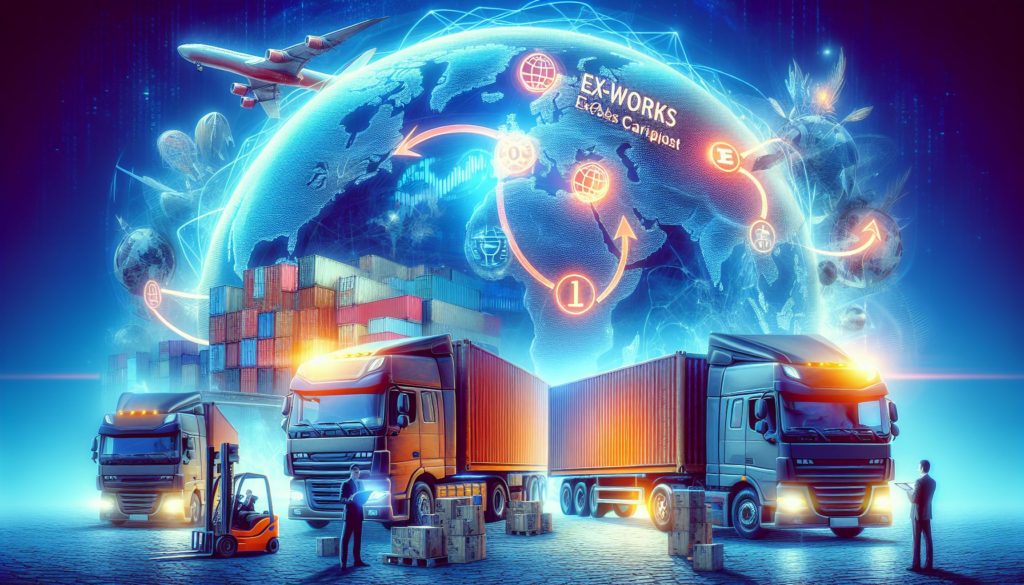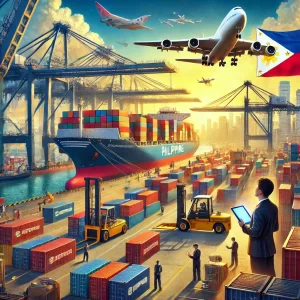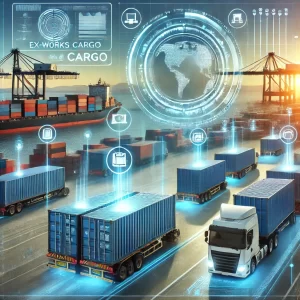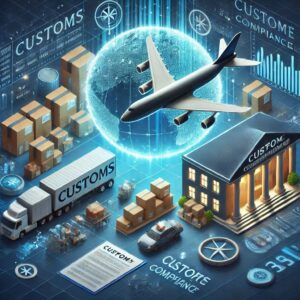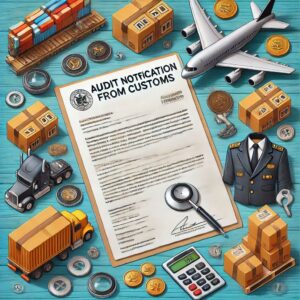In logistics and supply chain management, third-party logistics (3PL) providers are vital, offering essential services for global trade efficiency. The 3PL forecast holds uncertainties. Let’s delve into trends and forecasts shaping global 3PL.
Introduction: Navigating the evolving supply chain management landscape requires insight into the 3PL forecast. Globalization and digitalization reshape the industry. Understanding trends is crucial. In this exploration, we delve into 3PL forecasting, revealing insights for logistics stakeholders.
The importance of 3PL Forecast
In this exploration, we uncover the significance of 3PL forecasting. As supply chains evolve, forecasting becomes paramount for strategic planning, cost optimization, and maintaining competitiveness. Join us as we delve into the dynamic world of 3PL forecast, exploring its role in shaping the future of logistics and supply chain management on a global scale.
The Evolution of 3PL
Outsourcing logistics to third-party providers began in the late 20th century to streamline operations and cut costs. Over time, as supply chains expanded globally, 3PL’s role evolved. Today, they’re strategic partners, providing expertise, technology, and scalability.
Trends Driving the Future:
1. Technological Advancements: Technology is revolutionizing every aspect of logistics. From blockchain for transparent supply chains to AI-driven predictive analytics for demand forecasting, 3PL providers are harnessing these tools to enhance efficiency and agility.
2. E-commerce Explosion: The rise of e-commerce has reshaped consumer expectations, placing immense pressure on logistics networks. 3PL companies are adapting by offering specialized services tailored to the unique demands of online retail, including same-day delivery and reverse logistics.
3. Sustainability Imperative: With growing environmental concerns, sustainability has moved to the forefront of corporate agendas. 3PL providers are investing in eco-friendly practices, such as alternative fuels and route optimization, to reduce carbon emissions and minimize their ecological footprint.
4. Globalization and Trade Dynamics: Despite occasional disruptions like trade tensions and pandemics, globalization continues to drive the expansion of supply chains across borders. 3PL providers are capitalizing on this trend by offering end-to-end solutions that span continents, facilitating seamless trade flows.
Subscribe to the Ex-works24/7 newsletter
Forecasting the 3PL Future
1. Continued Growth: The global 3PL market is poised for robust growth in the coming years. As companies seek to focus on their core competencies and outsource non-core functions, demand for 3PL services will soar.
2. Industry Consolidation: The 3PL landscape is ripe for consolidation as larger players seek to expand their service offerings and geographic reach through mergers and acquisitions. This consolidation will lead to increased competition and innovation within the industry.
3. Emphasis on Customer Experience: In an era where customer experience reigns supreme, 3PL providers will prioritize service excellence. This includes offering real-time visibility into shipments, proactively addressing issues, and providing flexible, customized solutions.
4. Digital Transformation: Digitalization will be the cornerstone of success for 3PL providers in the future. Those that embrace digital technologies to optimize processes, enhance visibility, and deliver actionable insights will gain a competitive edge in the market.
Conclusion:
The future of the global 3PL industry is brimming with opportunities and challenges. As supply chains become more complex and interconnected, the role of 3PL providers will only grow in significance. By staying abreast of technological advancements, embracing sustainability, and prioritizing customer-centricity, 3PL companies can navigate the evolving landscape and thrive in the years to come.
Frequently
Asked Questions
- Digitalization and Automation: One of the most significant trends in the 3PL sector is the adoption of digital technologies such as AI, robotics, Internet of Things (IoT), and blockchain. These technologies help optimize supply chain operations, improve inventory management, and enhance the customer experience.
- E-commerce Growth: The explosive growth of e-commerce has dramatically increased the demand for efficient, scalable logistics solutions. 3PL providers are investing heavily in e-commerce-specific services, such as last-mile delivery and omnichannel fulfillment, to keep up with the increasing need for fast, reliable shipping.
- Sustainability and Green Logistics: Sustainability is becoming a key focus, with 3PL providers aiming to reduce their carbon footprint by adopting eco-friendly practices like electric vehicles (EVs), sustainable packaging, and energy-efficient warehouses. Companies are also prioritizing circular supply chains and waste reduction.
- Nearshoring and Regional Supply Chains: The disruption of global supply chains, including the impact of the COVID-19 pandemic and geopolitical tensions, has led to an increase in nearshoring and reshoring. Companies are moving production and warehousing closer to their end markets to reduce supply chain risks and improve speed-to-market.
- End-to-End Solutions and Integration: More 3PL providers are expanding their service offerings to include end-to-end solutions, integrating transportation, warehousing, inventory management, and last-mile delivery into seamless processes for clients. This provides greater visibility, flexibility, and efficiency.
The rise of e-commerce is a major driver of change for the global 3PL market. Key influences include:
- Increased Demand for Last-Mile Delivery: As e-commerce businesses seek faster delivery times, 3PL providers are under pressure to optimize last-mile delivery, often involving more local or urban-based distribution hubs and utilizing advanced delivery technologies (such as drones or autonomous vehicles).
- Omnichannel Fulfillment: E-commerce businesses are demanding 3PL solutions that can handle complex omnichannel operations. Providers must manage inventories across physical stores, online platforms, and multiple fulfillment centers, ensuring a seamless and unified experience for consumers.
- Real-Time Data and Tracking: The expectation for real-time visibility has increased with e-commerce growth. 3PL providers are adopting tracking systems, IoT, and data analytics to provide customers with up-to-date information on their orders, reducing delays and improving customer satisfaction.
- Customized and Flexible Solutions: E-commerce companies require flexible and scalable logistics solutions that can adapt to peak seasons, such as holidays, or fluctuating order volumes. 3PL providers are evolving to offer tailored solutions that can meet varying customer demands with agility.
3PL providers are navigating a range of challenges as they adapt to the evolving supply chain environment:
- Supply Chain Disruptions: Ongoing global challenges such as the COVID-19 pandemic, geopolitical tensions, and natural disasters have caused significant disruptions to supply chains. 3PL providers must remain agile to adjust to changing conditions and ensure continuity of service.
- Labor Shortages and Workforce Management: Many regions are experiencing labor shortages, particularly in warehousing, trucking, and transportation. 3PL providers must find innovative ways to attract, train, and retain talent, while also exploring automation and AI to supplement human labor.
- Rising Fuel and Transportation Costs: The fluctuating price of fuel and the rising costs of transportation are key concerns. To mitigate this, 3PL providers are exploring alternative fuels (such as LNG and electric vehicles), optimizing delivery routes, and leveraging technologies to improve operational efficiency.
- Cybersecurity and Data Privacy: As logistics operations become more digital, the risk of cyber threats increases. 3PL providers must invest in robust cybersecurity measures to protect sensitive data and ensure compliance with regulations such as the GDPR and CCPA.
- Regulatory Compliance: Navigating complex international regulations and trade policies, including tariffs, import/export restrictions, and local regulations, is an ongoing challenge for global 3PL providers. Staying compliant while offering seamless service is crucial for maintaining customer trust.
Technology is poised to play a transformative role in the future of the 3PL industry. Key technological trends include:
- Automation and Robotics: Many 3PL providers are already investing in automation, including robots for warehouse picking, packing, and sorting. Automation reduces labor costs, increases speed, and enhances accuracy, making logistics operations more efficient.
- Artificial Intelligence (AI) and Machine Learning (ML): AI and ML are being leveraged for demand forecasting, route optimization, predictive analytics, and inventory management. These technologies allow 3PL providers to make data-driven decisions that improve service levels and reduce costs.
- Blockchain for Transparency: Blockchain technology is being explored for improving transparency in supply chains. By providing an immutable and transparent record of transactions, blockchain helps reduce fraud, improve visibility, and streamline documentation and payments.
- Internet of Things (IoT): IoT devices, such as RFID tags and sensors, are becoming increasingly common in the 3PL space. These devices help track goods in real-time, monitor environmental conditions (e.g., temperature for perishable goods), and provide better insights into operational performance.
- Digital Freight Platforms: Digital freight platforms are transforming the way 3PL providers book and manage shipments. These platforms use algorithms to match available capacity with shipper demand, allowing for greater flexibility and optimization in the supply chain.
Sustainability is becoming a central pillar of 3PL strategies, driven by both consumer demand for greener practices and regulations aimed at reducing carbon emissions:
- Green Logistics Solutions: Many 3PL providers are investing in energy-efficient warehouses, utilizing electric trucks, and adopting eco-friendly packaging materials. These efforts help reduce the overall carbon footprint of logistics operations.
- Sustainable Supply Chain Practices: 3PLs are working with clients to design supply chains that are not only efficient but also environmentally responsible. This includes optimizing transportation routes to reduce fuel consumption and implementing waste reduction practices in warehouses and packaging.
- Circular Economy Models: Increasingly, 3PL providers are supporting a circular economy by offering reverse logistics services, allowing products to be returned, refurbished, and reused, thereby reducing waste and promoting the reuse of materials.
- Government and Industry Regulations: As governments introduce more stringent environmental regulations, 3PL providers are responding by aligning their strategies with regulatory frameworks. For example, some are working to meet carbon-neutral targets by investing in renewable energy and offsetting carbon emissions.
- Client Demand for Sustainability: Companies, especially those in consumer-facing sectors, are under increasing pressure to demonstrate their environmental responsibility. As a result, they are turning to 3PL providers who can help them meet sustainability goals while maintaining operational efficiency.
